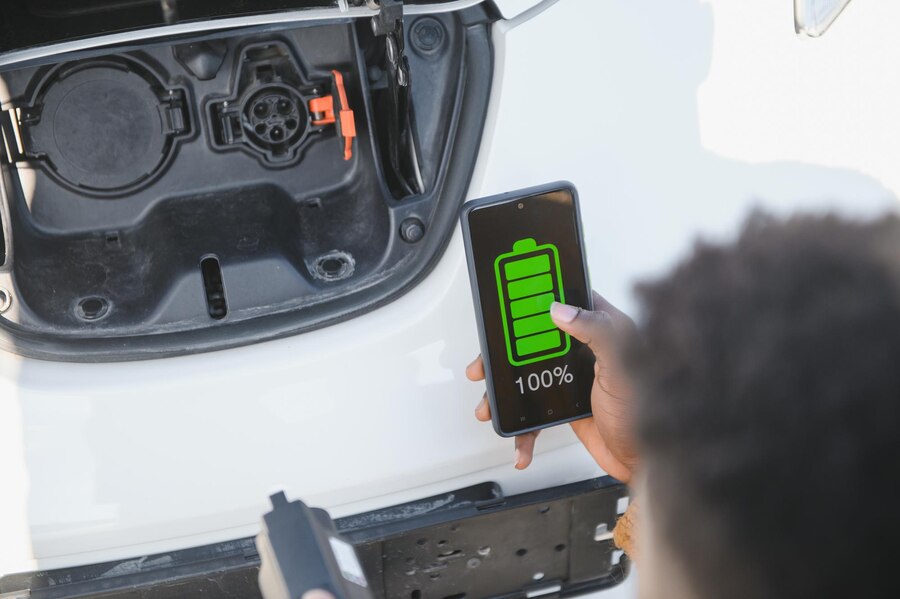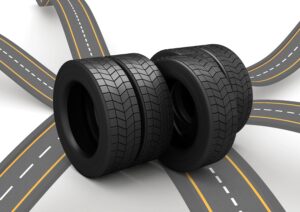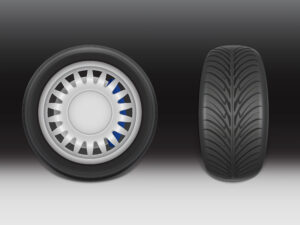Why Is Your Car Not Starting but Battery Is Fine?

Imagine this: you’re ready to leave for an important meeting, turn the key in your car’s ignition, and nothing happens. The dashboard might light up, but there’s no sign of the engine roaring to life. This frustrating experience is all too common and usually leaves car owners scratching their heads, especially when the battery appears to be in perfect condition.
A car not starting but battery is fine can be caused by various issues beyond the battery itself. Problems with the alternator, starter motor, ignition system, or fuel delivery are often to blame. The good news is that most of these issues can be diagnosed and resolved quickly if you know what to look for.
This guide dives deep into the possible reasons behind a car not starting but battery is fine and offers practical solutions to troubleshoot and fix the problem. Whether it’s a minor glitch or a major mechanical fault, understanding these issues will help you get back on the road with confidence.
Why Your Car May Not Start Even When the Battery Is Fine
When your car not starting but battery is fine, it’s essential to look beyond the battery and consider other key components of the vehicle. Here are the primary culprits:
1. Electrical System Issues
A good battery doesn’t always guarantee a functioning electrical system. Several issues could prevent the car from starting:
- Blown Fuses: Fuses protect the car’s electrical circuits. If a fuse linked to the ignition system or fuel pump blows, it can block the power supply, preventing the engine from cranking.
- Loose or Corroded Terminals: Even a fully charged battery won’t work effectively if its terminals are corroded or connections are loose. Cleaning the terminals with a baking soda solution or tightening the clamps often resolves this.
2. Faulty Alternator
The alternator is responsible for charging the battery and powering the car’s electrical systems while the engine runs. A failing alternator might not provide enough power, leading to a drained battery over time. Signs of a bad alternator include dim headlights, flickering dashboard lights, or difficulty starting after short trips.
3. Malfunctioning Starter Motor
The starter motor’s job is to crank the engine when you turn the key. If it’s faulty, you might hear clicking noises, or the motor might not respond at all. Sometimes, an overheated starter motor can temporarily fail, requiring a replacement for long-term reliability.
4. Problems with the Ignition System
The ignition system is a vital link between the battery and the engine. A defective ignition switch can block power to the starter motor, leaving your car unresponsive. Symptoms of a bad ignition switch include difficulty turning the key, flickering dashboard lights, or intermittent starting problems.
5. Fuel System Blockages
Even if the electrical systems are working fine, the car won’t start without proper fuel delivery. Possible issues include:
- Clogged Fuel Filter: Over time, the fuel filter can become clogged with debris, restricting fuel flow to the engine. Regular replacement every 30,000 miles can prevent this problem.
- Faulty Fuel Pump: The fuel pump delivers fuel from the tank to the engine. A malfunctioning pump can cause the engine to crank but not start, often requiring professional repair.
6. Faulty Sensors or Computer Systems
Modern cars are equipped with various sensors and electronic control units (ECUs) that regulate everything from fuel delivery to engine timing. If any of these components fail, they can prevent the engine from starting even if the battery is in good condition.
- Crankshaft or Camshaft Position Sensor Failure: These sensors send signals to the car’s ECU about the position of the engine’s pistons and camshaft. If either fails, the engine won’t start.
- ECU Malfunction: A malfunctioning ECU can prevent the car from starting, as it’s responsible for managing crucial engine functions. This might require professional diagnostic tools to detect.
7. Timing Belt or Chain Issues
The timing belt or chain is crucial for synchronizing the engine’s internal parts. If it breaks or slips, the engine may fail to start or could suffer severe damage.
- Symptoms of a Faulty Timing Belt: The engine may cranks but won’t fire. In more severe cases, the engine might make strange noises or suffer internal damage due to misalignment.
What to Do?
If you suspect timing belt issues, consult a mechanic immediately. Replacing a broken or worn timing belt or chain before it fails can prevent expensive engine repairs.
8. Overheating or Engine Seizure
If your car has been running too hot or has overheated recently, it could cause the engine to seize, making it impossible to start. Overheating can cause critical engine components to warp or break, leading to severe damage.
- Signs of Overheating: Temperature gauge spikes, steam rising from the engine, or an unusual burning smell.
- Engine Seizure: This happens when internal engine components lock up due to excessive heat and friction.
What to Do?
If your car has overheated, it’s important to stop driving immediately to prevent further damage. Have it towed to a mechanic for a thorough inspection.
9. Problems with the Neutral Safety Switch
For automatic transmission cars, the neutral safety switch is designed to prevent the car from starting unless it is in “Park” or “Neutral.” If this switch fails, the engine might not start even if everything else is working correctly.
- Symptoms of a Faulty Neutral Safety Switch: You may notice the car won’t start unless the gear shift is moved between Park and Neutral.
- Solution: Replacing or adjusting the switch is a relatively easy fix that a mechanic can do for you.
Comprehensive Troubleshooting Guide
When facing a car not starting but battery is fine, follow these steps to identify and address the issue:
Step 1: Inspect the Battery
- Check Connections: Ensure the battery terminals are clean, free of corrosion, and tightly secured.
- Test Voltage: Use a multimeter to test the battery’s voltage. A healthy battery should read between 12.6–12.8 volts when the engine is off.
Step 2: Assess the Alternator
- Monitor Voltage with the Engine Running: If the alternator is functioning, the voltage should rise to 13.8–14.2 volts.
- Look for Symptoms: Flickering lights or difficulty starting after a short drive often indicate alternator issues.
Step 3: Evaluate the Starter Motor
- Listen for Noises: Clicking sounds when turning the key suggest starter problems.
- Test the Starter: If the starter overheats or fails to crank, it might need repair or replacement.
Step 4: Inspect the Ignition System
- Check for Power: Test whether the ignition switch sends power to the starter.
- Look for Warning Signs: Difficulty turning the key or inconsistent starting behavior often points to ignition issues.
Step 5: Examine the Fuel System
- Ensure There’s Fuel: Double-check the fuel gauge to ensure the tank isn’t empty.
- Inspect the Filter and Pump: A clogged filter or faulty pump might prevent proper fuel delivery.
Common Preventative Measures
To minimize the chances of a car not starting but battery is fine, follow these preventative tips:
- Regular Battery Maintenance: Clean the terminals and check for signs of wear during routine servicing.
- Inspect the Alternator and Starter Motor: Ask your mechanic to test these components periodically.
- Replace Filters on Time: Follow your car manufacturer’s guidelines for replacing fuel and air filters.
- Watch for Warning Signs: Address flickering lights, unusual noises, or inconsistent starting behaviour promptly.
When to Seek Professional Help
While many of the issues above can be tackled with basic troubleshooting, some may require professional help to fix properly. If you’ve tried troubleshooting and your car still won’t start, it’s time to bring in a professional. Mechanics have the tools and expertise to diagnose complex electrical, fuel, and mechanical issues that could be preventing your car from starting.
Call-to-Action: Trust KwikFix Auto for Expert Solutions
When your car not starting but battery is fine, let the experts at KwikFix Auto take over. Whether it’s a faulty alternator, starter motor, or fuel system issue, we have the tools and expertise to fix it quickly and reliably.
- Why Choose KwikFix Auto?
- High-quality batteries with long-lasting performance.
- Expert repair services for all car brands, including luxury models.
- Convenient locations in Mumbai, Thane, and Navi Mumbai.
Call us today at +91 9950 345 345 or visit your nearest service center to get back on the road with confidence. Don’t let a non-starting car disrupt your day—KwikFix Auto has got you covered!
Frequently Asked Questions
Q1. Why won’t my car start even though the battery is new?
A1. A new battery doesn’t guarantee other systems like the alternator, starter motor, or ignition switch are working correctly.
Q2. What does it mean if my car clicks but doesn’t start?
A2. Clicking noises often indicate a faulty starter motor or loose battery connections.
Q3. Can I drive with a bad alternator?
A3. It’s risky. A bad alternator can drain the battery and cause your car to stall unexpectedly.
Q4. How can I test the starter motor?
A4. Listen for clicking sounds or use a multimeter to check if the starter is receiving power when the key is turned.
Q5. What are signs of a clogged fuel filter?
A5. Reduced engine performance, difficulty starting, and sputtering during acceleration are common symptoms.
Q6. Can a bad ignition switch drain the battery?
A6. Yes, a faulty ignition switch can cause parasitic power drain, weakening the battery over time.
Q7. How often should I replace my fuel filter?
A7. Replace it every 30,000 miles or as recommended by your car’s manufacturer.
Q8. Should I seek professional help for starting problems?
A8. If basic troubleshooting doesn’t solve the issue, consult a qualified mechanic for a detailed diagnosis.
Related Articles
Car AC Gas Filling Cost | Electric Car Battery Capacity | How Car AC Works | How to Clean Car AC Filter | Car AC Repair Cost | AC Chair Car vs Executive Chair Car | Which Gas is Used in Car AC | Does AC in Car Consume Fuel | Why My Car AC is Not Cooling | Xylo Car Mileage with AC





